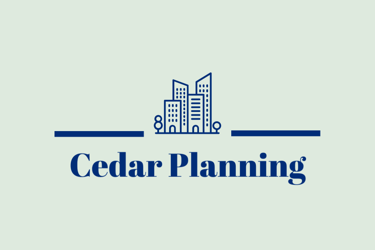Converting a House into Flats: Key Challenges and Opportunities
Converting existing housing into separate flats can make an important contribution to housing supply in an area, whilst also maximising the value of your property.
10/17/20254 min read


Converting your house into separate residential flats can maximise its value, generate multiple income streams, and contribute to local housing supply. However, this form of development comes with its own set of planning, design and technical challenges — and careful preparation is essential to achieve success.
At Cedar Planning, we’ve helped numerous clients secure planning permission to convert houses into flats across London and the wider UK. In this post, we share the key considerations and insider tips to help you approach your own project with confidence.
💡 Thinking of subdividing your property into flats? Contact Cedar Planning today for a free site assessment and discover your home or portfolio's true development potential.
1 - Understand Local Planning Policies
When considering the conversion of a house into flats, the first step is to understand your local council’s planning policies. Every local authority has its own regulations on how homes can be subdivided or repurposed — and some are far more restrictive than others.
For example, certain councils (like the London Borough of Brent) seek to retain family-sized dwellings. Under Policy DMP 17, a house conversion is only permitted where the existing property is 130m² or more, and a 3-bedroom dwelling is retained. In contrast, other areas actively encourage flat conversions to boost housing supply.
➡️ Not sure what your council’s policy says? Cedar Planning can carry out a planning policy review and help you understand the opportunities and risks before you commit.
2 - Check Nationally Described Space Standards
Each new flat created through a subdivision must meet the Nationally Described Space Standards (NDSS), ensuring every unit is large enough, well-designed, and comfortable to live in.
These standards include:
Minimum overall floor areas
Minimum bedroom sizes and widths
Storage requirements
Ceiling height requirements
If you’re including loft conversions, remember that reduced head height areas count towards total floor space differently. Many schemes also need extensions or alterations to achieve compliance — which introduces new planning considerations (see section 6).
📏 Need help checking whether your proposed flats meet space standards? Speak with Cedar Planning for tailored design and compliance advice.
3 - Consider A Staged Planning Approach
If your project requires extensions and alterations to your property, you can often benefit from a phased planning strategy.
At Cedar Planning, we love thinking one step ahead of the game, and frequently advise our clients on the best strategy to minimise risk through the process. This often includes establishing permitted development rights through Certificate of Lawfulness applications - for example, for dormer windows or hip-to-gable loft conversions. For larger extensions, you may wish to consider Prior Approval applications to establish the principle of large rear extensions without the need for a full planning application.
This staged approach creates a "fallback" position, strengthening your case and helping manage risk - especially in areas where councils or neighbours may object to large extensions or large rear dormers. In fact, most council planning officers hate large rear dormers, so this is often a sensible approach.
🧭 Planning a complex conversion? We can help map out a step-by-step strategy to secure planning approval efficiently and cost-effectively.
4 - Design Private and Communal Garden Spaces Carefully
Outdoor space is a vital design consideration when subdividing a house into flats.
Each flat should have appropriate and private garden or balcony space, while also respecting the privacy of neighbouring homes. Councils may resist the sub-division of rear gardens if it appears cramped or out of character with surrounding plots.
Thoughtful landscaping, planting, or fencing can help achieve privacy while maintaining an attractive setting.
5 - Address Parking and Transport Requirements
Converting a single dwelling into several flats usually means increased occupancy — and therefore greater parking demand.
Local planning policies often include parking standards that specify how many spaces are required per flat. However, if your site is in a highly sustainable location (close to public transport, shops and schools), councils may accept a “car-free” development or request a legal agreement restricting access to parking permits.
🚗 Before you submit your planning application, ensure your parking provision complies. Cedar Planning can help prepare robust transport and access statements to support your case.
6 - Ensure Extensions Are Sympathetic
Most house-to-flat conversions involve extensions and alterations to maximise the available floor space and returns on investment — whether to the rear, side, or roof. These must be designed sensitively to:
Respect the character of the area
Maintain neighbours’ daylight and privacy
Create a balanced, proportionate appearance
Councils often assess extensions as if they were for a single dwelling, meaning limits on height, depth and design. Council's will also require that the proposal doesn't cause unnecessary harm to the residential amenity of neighbouring properties.
🏗️ Our team at Cedar Planning provides full design reviews and pre-application advice to ensure your proposals meet local design policies.
7 - Plan Internal Layouts to Avoid Future Issues
You've successfully navigated the above problems, and think you are in the clear. Then comes the internal layout of the relative flats.
A well-thought-out internal layout not only ensures compliance but also enhances liveability and long-term value.
When designing a house the internal layout is important to create a good flow of the property, as well as allowing ample natural light and ventilation, as well as making the best of views / outlook. When designing a scheme to convert a house into flats, you need to take this into account, but you will also need to think about how the flats work with each other. For example, if you have the kitchen or living room of one flat sharing a wall with a bedroom of another flat this could cause noise issues. Similarly, these issues also occur if different types of rooms are set below or above each other.
A smart internal layout can reduce construction costs and improve resident satisfaction — making your flats easier to sell or rent.
Conclusion: Unlock the Potential of Your Property
Subdividing your house into flats can be a rewarding way to increase property value, generate rental income, and support local housing needs. However, without careful planning, many projects face delays, refusals or unexpected costs.
At Cedar Planning, we specialise in helping homeowners and developers navigate the complexities of planning permission for flat conversions — from feasibility assessments to full application management.
📞 Ready to explore converting your house into flats?
Contact Cedar Planning today for a free, no-obligation consultation and discover how to make your project a success.
Contacts
Email: info@cedarplanning.co.uk
Phone: 07418 610156
Office (by appointment only) Cedar Planning Ltd, 82a James Carter Road, Mildenhall, Bury St Edmunds, IP28 7DE


Click the above button for a free Whatsapp consultation

